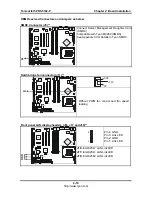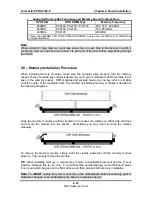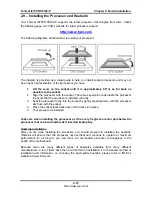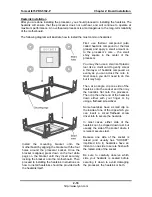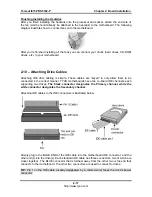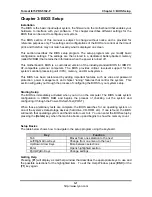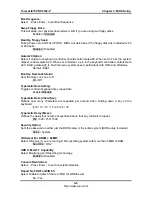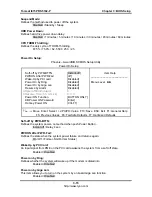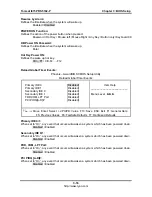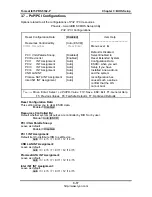
Tomcat i875PR S5102-P
Chapter 3: BIOS Setup
In Case of Problems
If you discover that you have trouble booting the computer after making and saving the
changes with the BIOS setup program, you can restart the computer by holding the power
button down until the computer shuts off (usually within 4 seconds); resetting by pressing
CTRL-ALT-DEL; or clearing the CMOS.
The best advice is to only alter settings that you thoroughly understand. In particular, do not
change settings in the Chipset section unless you are absolutely sure of the outcome. The
Chipset defaults were carefully chosen by TYAN or your system manufacturer for the best
performance and reliability. Even a seemingly small change to the Chipset setup options may
cause the system to become unstable or unusable.
Setup Variations
Not all systems will have the same BIOS setup layout or options. While the basic look and
function of the BIOS setup remains more or less the same for most systems, the appearance
of your Setup screen may differ from the charts shown in this section. Each system design
and chipset combination requires a custom configuration. In addition, the final appearance of
the Setup program depends on the system designer. Your system designer may decide that
certain items should not be available for user configuration, and remove them from the BIOS
setup program.
Note:
On the following pages, options written in
bold type
represent the BIOS Setup default.
3.1 – Main BIOS Setup
When you enter Phoenix - AwardBIOS CMOS Setup Utility, the following screen will appear as
below:
Phoenix – AwardBIOS CMOS Setup Utility
►
Standard CMOS Features
►
Advanced BIOS Features
►
Advanced Chipset Features
►
Integrated Peripherals
►
Power Management Setup
►
PnP/PCI Configurations
►
PC Health Status
►
Frequency/Voltage Control
Load Fail-Safe Defaults
Load Optimized Defaults
Set Supervisor Password
Set User Password
Save & Exit Setup
Exit Without Saving
Esc: Quit
↑
↓
←
→
: Select Item
F10: Save & Exit Setup
Time, Date, Hard Disk Type…
Standard CMOS Features
Use this menu for basic system configuration.
3-2
http://www.tyan.com

